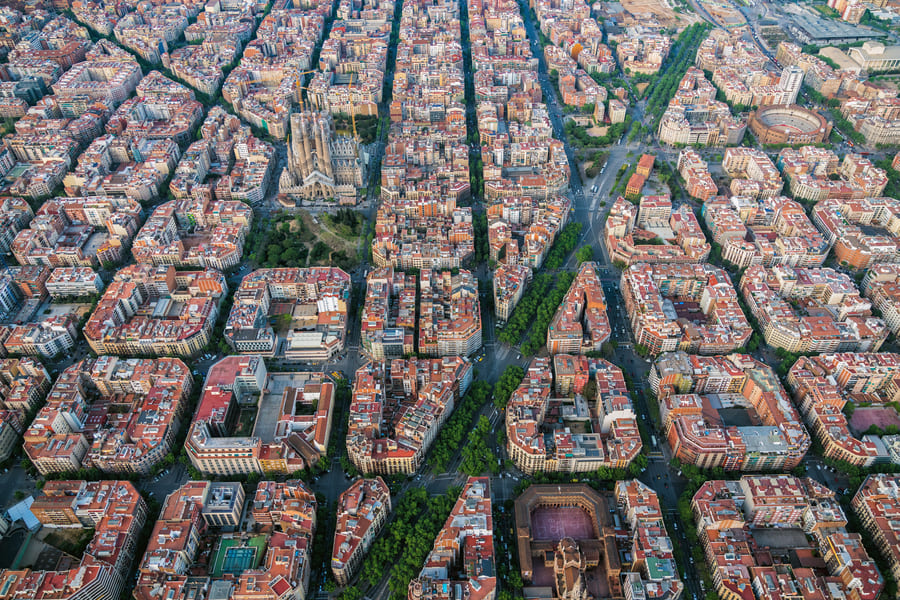Healthy, efficient, and respectful of the environment are some of the traits that characterize sustainable buildings. But how is its sustainability evaluated and certified?
A sustainable building must be environmentally friendly, comfortable and —contrary to popular belief— need not be more expensive than a conventional building. Moreover, it will be an energy-saving building, which in the long run will make it even more economical. But how do we know if it is really sustainable? What other characteristics must it meet? We respond to all these questions; we check how this sustainability is verified and why it makes sense to do sustainability certifications in buildings.
What is a sustainable building?
Sustainable development: One that meets the needs of the present without compromising the needs of future generations. - Brundtland Report, 1987.
Among its priorities, Europe proposes sustainable development, the "promotion of a more resource-efficient, greener and more competitive economy". We must decouple economic growth from environmental degradation. And this is a challenge that sustainable building can help to meet.
Sustainable building makes more efficient use of materials, energy, and involves a lower impact on nature. Sustainable buildings are those designed and constructed using sustainability concepts from the outset and throughout their entire life cycle. These are healthy, comfortable buildings with low environmental impact and high energy efficiency.
Characteristics of sustainable buildings
A sustainable building must therefore be:
- Comfortable and healthier. Sustainable or ecological buildings are endowed with better interior environmental quality and better health of their occupants.
- Environmentally friendly. Less polluting, with a low carbon emission impact.
- Be aligned with the environmental objectives dictated by the UN SDGs.
- Energy and resource efficient. Complies with the regulations regarding the energy efficiency of the building. It is a building with low or nearly zero-energy consumption, and this energy also comes from renewable sources. According to a study of LEED certified buildings - a tool we will discuss in the next section - they reduce the use of energy, water and waste, resulting in savings of 30 to 97 %.
- More productive and profitable. According to the same study, the operating costs of a sustainable building can decrease by 8-9 %, while its value increases by up to 7.5 %. In addition, many of these properties see increases in return on investment of up to 6.6%.

Verifying sustainability: How do you know if a building is sustainable
In order to compare buildings, talking about sustainability as a generic term makes no sense. There must be tools to measure such sustainability in an objective way. Thus, international organizations have developed different ways to assess sustainability in building. Independent bodies responsible for certifying sustainable building projects.
The following is a brief description of the most commonly used building sustainability certifications and their certifiers:
- BREEAM (UK): a rating and certification system for sustainable buildings established in 1990 by BRE, the Building Research Establishment, a world-leading sustainable building research organization.
- BREEAM was the world's first environmental assessment method in building construction.
- WELL (USA): by the International WELL Building Institute, it is the first building assessment tool focused on human health and well-being.
- It measures the characteristics of the built environment that affect the occupants by looking at 7 factors: air, water, nutrition, light, fitness, comfort and mind.
- LEED: launched by the U.S. Green Building Council (USGBC) in 2000. It assesses various criteria through sustainability indicators grouped into 7 categories. Its objective is to reduce the environmental impact of buildings considering their entire life cycle. The levels of LEED certification are: Certificate, Silver, Gold, and Platinum.
- VERDE: developed in 2009 by the Spanish Green Building Council (GBCe), or Consejo para la Edificación Sostenible en España, in collaboration with expert partners. This sustainability certification tool uses a building that meets the minimum requirements as a reference to give the final value of its assessment.
- DGNB certification: from the German Green Building Council in cooperation with the German Federal Ministry of Transport, Building and Urban Development. The DGNB methodology assesses the sustainability of the building as a whole in terms of environmental, economic, socio-cultural, functional and quality aspects.
There are multiple environmental and economic benefits associated with sustainable building design, often achieved through the use of certification systems. In order to ensure that a building is truly sustainable, it is recommended that it is accredited by an independent body such as those listed here. Beforehand, an external consulting helps to assess the degree of the project's commitment to the environment and to improve its sustainability in order to obtain the best rating.


